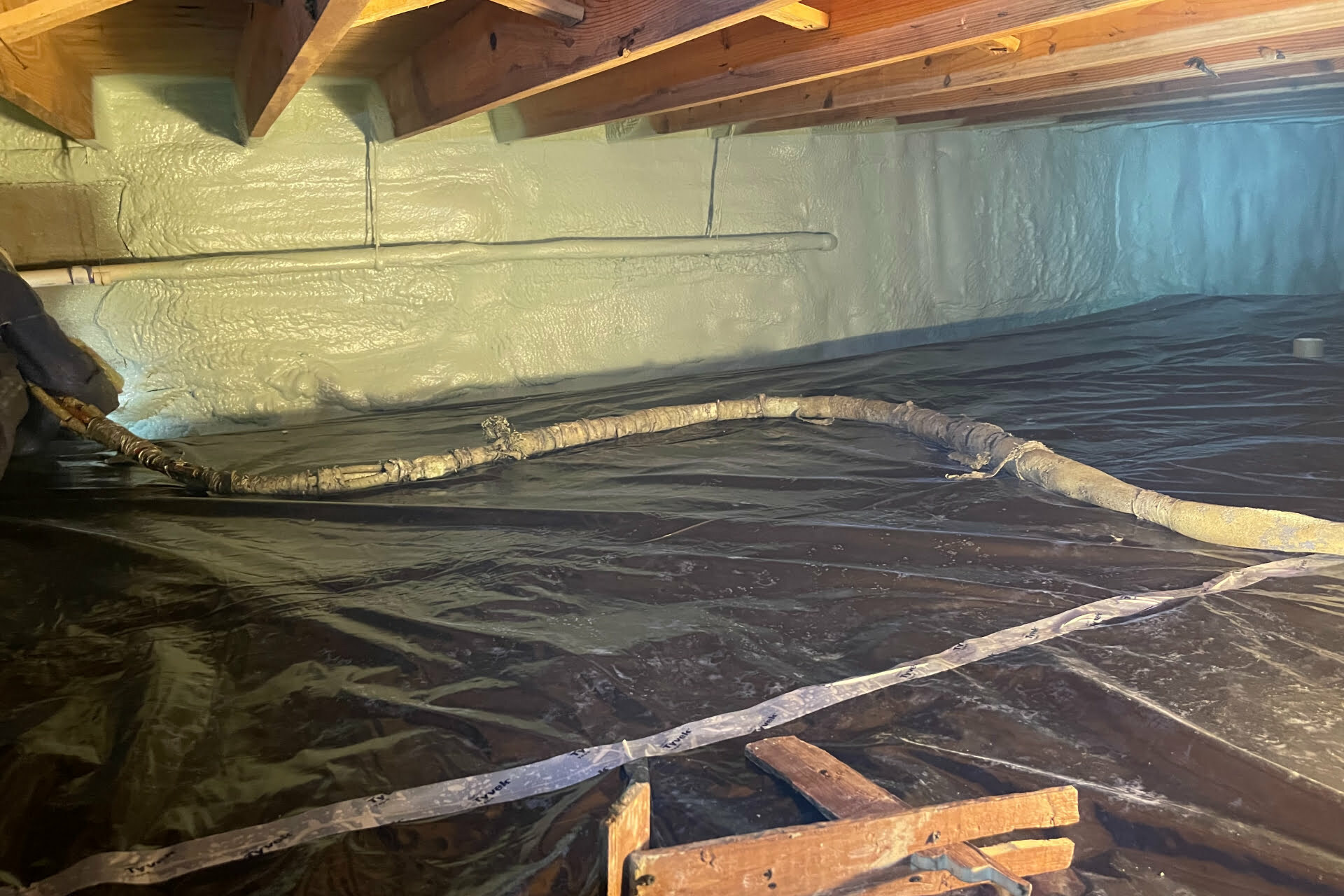Spray foam insulation is one of the most efficient forms of insulation available today, offering a range of benefits from significant energy savings to improved indoor air quality. However, accurate installation of spray foam insulation can be a tricky process, requiring not only technical knowledge of the material and the installation process but also an understanding of the necessary tools and safety precautions.
Understanding Spray Foam Insulation
Over the years, spray foam insulation has become a popular home improvement method. Its main role includes assuring energy efficiency through interior wall cavity fill or unvented attic applications. Our spray foam insulation buying guide will provide you with insight into how you should select the best type for your small business or home needs.
Introduction to Spray Foam Insulation
Spray foam insulation is a type of expanding foam used to insulate walls and seal gaps and cracks. It uses a spray gun and comes in different forms. It comes in two types, open-cell foam (low-density foam) and closed-cell foam (high-density foam).
Benefits of Spray Foam Insulation
This insulation provides numerous benefits, including energy efficiency, noise reduction, and pest deterrent.
Different Types of Spray Foam Insulation: Open Cell and Closed Cell
The major difference between the two types of spray foam insulation is their cell structure. Open-cell foam has a less dense structure, which makes it lighter and more breathable. On the other hand, closed-cell foam is dense and rigid, making it an excellent barrier against water and air.
Necessary Tools and Safety Guidelines
You should know the essential tools and safety guidelines for handling spray foam.
Essential Tools for Installing Spray Foam Insulation
Basic tools include a spray foam gun and polyurethane expanding foam insulation. Other tools like gloves, goggles, and a respirator are important for safety reasons. A foam cleaner is also required for cleaning the spray gun.
Safety Precautions When Working with Spray Foam Insulation
Always ensure you’re covered up properly when working with spray foam insulation to protect against chemical exposure. Also, it’s essential to use urethane adhesives in a well-ventilated area to prevent harmful fumes’ inhalation.
Understanding the Importance of Proper Ventilation
Adequate ventilation helps to limit exposure to toxic fumes from the spray foam and urethane adhesives. This is of utmost importance when working in closed spaces to prevent health complications. A properly ventilated area also improves the longevity and effectiveness of the insulation sprayed.
Step-by-Step Guide to Installing Spray Foam Insulation on Walls
Here’s a simple guide to help you install spray foam insulation on your walls.
Step 1: Prepping the Wall for Installation
Before you start, clean the walls thoroughly to remove dust and debris. This helps the foam adhere properly to the wall. Cover all areas you don’t want the spray foam to touch with plastic sheets.
Step 2: Applying the Spray Foam Insulation
Once the wall is cleaned and prepared, you can start spraying foam insulation. Always start from the top and work your way down for perfect coverage. Ensure you’re holding the spray gun approximately 12 inches from the wall for perfect spray.
Step 3: Trimming and Finishing Up
After the foam has fully expanded and cured, you should trim off the excess using a knife. This is aimed at making your wall smooth for painting or wallpapering. You should then clean up your workspace and store your materials properly.
Professional Installation Vs. DIY: Making the Right Choice
When it comes to spray foam insulation for walls, there are two options: You can hire professionals or you can do it yourself. Each choice has its advantages and disadvantages, and the best one for you depends on many variables. Let’s discuss this in detail.
Pros and Cons of DIY Installation
Doing your own spray foam insulation can save money compared to hiring a professional, but it requires investing in spray equipment and learning proper application techniques. If not applied correctly, spray foam can have uneven coverage or gaps, reducing its effectiveness. DIY application means accepting responsibility for wearing proper protective gear to limit exposure to dangerous fumes. While spray foam effectively air seals and insulates, DIY projects risk compromising those benefits if the foam is not uniformly applied across all surfaces and gaps.
Hiring a professional spray foam contractor costs more but their experience leads to proper application and maximal performance. Ultimately, attempting spray foam as a DIY project should be weighed against your ability to apply it correctly and the added expense of professional installation.
Advantages of Professional Installation
The expertise of professionals in installing spray foam and the assurance of optimal performance are among their main advantages. They can handle the complexities of unvented attic applications or interior wall cavity fill with precision, ensuring the efficient use of spray foam insulation.
Professionals bring more than just knowledge of open-cell, closed-cell, and other forms of foam insulation. They also understand how to achieve continuous insulation, which is where a professional’s experience really shines.
Factors to Consider When Choosing Between DIY and Professional Installation
Some factors to consider are your familiarity with spray foam and cell structure, your comfort using a spray gun and your budget. A DIY project may seem less expensive initially but remember to count in the cost of materials — and the potential costs of any mistakes. Consider investing in tools like a foam spray gun, urethane adhesives, and more.
Maintaining Your Spray Foam Insulation
Common Spray Foam Insulation Issues and Solutions
Some common issues include cracks or gaps in the insulation spray that reduce energy efficiency, but these are usually easy to fix with some additional foam spray or big gap filler. Moisture infiltration is a more serious issue, but closed-cell foam with its dense structure can resist moisture better than open-cell foam.
For more serious issues or any doubts you have about your insulation’s efficiency, it might be a good idea to bring in a professional. Professionals can also advise on when to consider using polyurethane expanding foam insulation or when to switch from open cell to closed cell for increased density and efficiency.
Routine Inspection and Maintenance of Your Insulation
Regularly inspecting your insulation for possible cracks or gaps and addressing them promptly enhances the longevity and efficiency of your insulation. Depending on the type of spray foam insulation used (open or closed cell), the inspection frequency might vary. Open-cell foam needs more frequent inspections due to its lower density compared to closed-cell foam.
Keeping the spray gun and other tools clean and in good working condition is also crucial for efficient insulation spray and healthy longevity.
Cincinnati RetroFoam Has You Covered
Installing spray foam insulation can be a great way to increase your home’s energy efficiency and comfort. As outlined in this guide, it is an involved process that requires careful planning, safety precautions, and proper materials and tools. When installed correctly by a trained professional, spray foam insulation forms an air-tight seal that minimizes heat loss in winter and heat gain in summer.
Cincinnati RetroFoam provides top-quality spray foam insulation that seals cracks and gaps, helping regulate temperature and reduce energy costs. Contact Cincinnati RetroFoam today to schedule a free estimate and let us show you how our exclusive spray foam insulation can help make your property more comfortable year-round.
Frequently Asked Questions
Is spray foam insulation good for walls?
Spray foam insulation can be a great option for insulating walls because of its ability to fill the entire cavity and prevent air leaks.
Can you spray foam walls yourself?
It is possible to spray foam your own walls as a DIY project if you have the right equipment and safety precautions. However, achieving professional results likely requires hiring an insulation contractor.
Is spray foam in walls worth it?
The cost of spray foaming walls is usually higher compared to other insulation like fiberglass batts. But for many homes, the benefits outweigh the costs.


